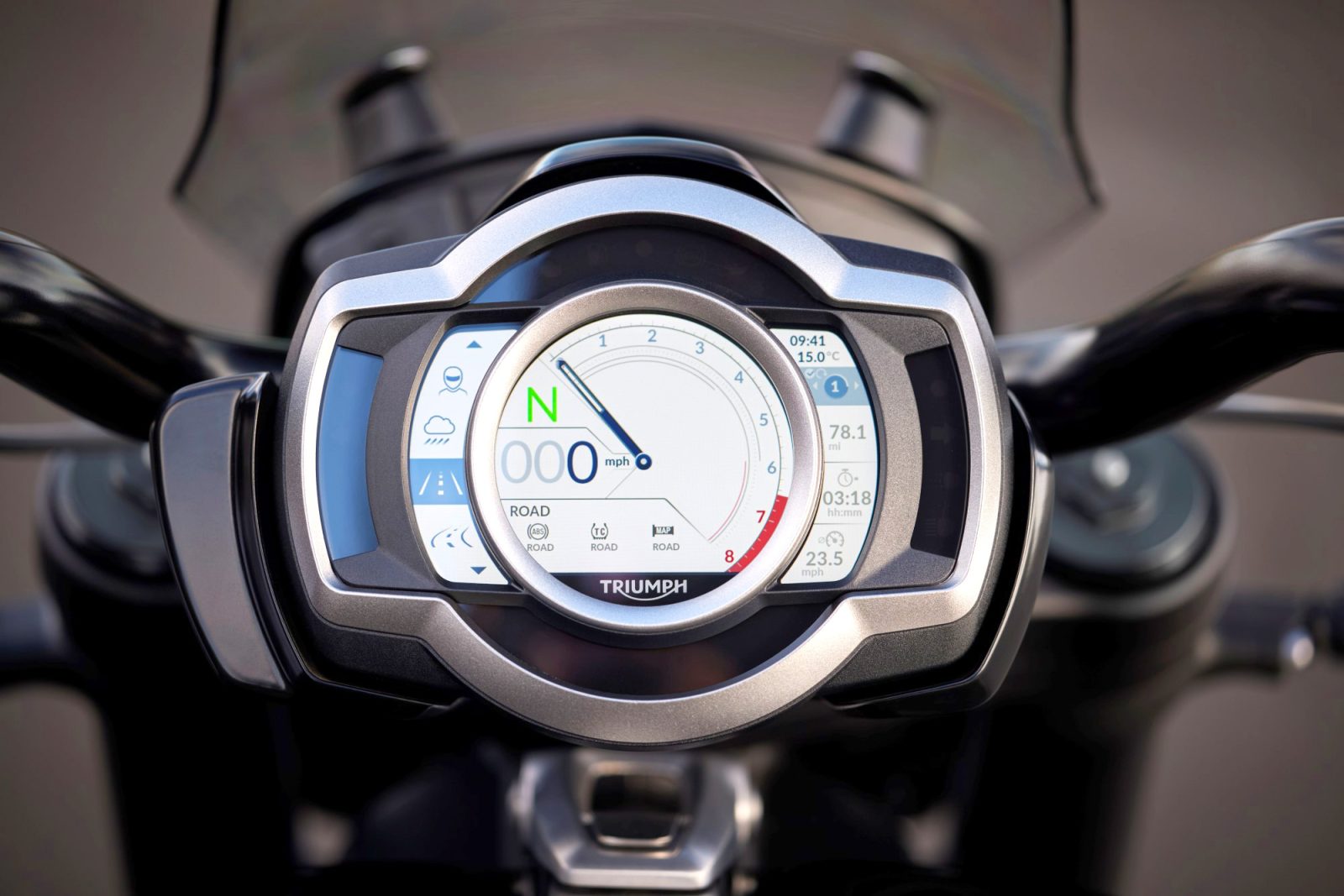Triumph’s original Rocket III drew a line under the battle for cruiser capacity supremacy of the early 2000s with a 2294cc triple knocking out 110kW (148hp) when it was launched 20 years ago. It was the biggest purpose-made motorcycle engine ever built and retains that title to this day – having grown to 2458cc with an all-new generation launched in 2019.
With so much capacity it’s no surprise the Rocket 3 (it swapped from ‘III’ to ‘3’ with the 2019 redesign) has been the torquiest Triumph of all throughout its life, but the new 2024 Rocket 3 Storm also becomes the most powerful mass-produced bike in Triumph’s history with a peak of 134kW (180hp) at 7000rpm. That’s enough to top the current Speed Triple 1200’s 132.5kW (177hp) and is a substantial hike compared to the 123kW (165hp) of the 2019-23 Rocket 3.
 The new Rocket 3 Storm GT and Rocket 3 Storm R are direct replacements for the previous models – the ‘Storm’ name applies to all Rockets for 2024 and doesn’t denote a special edition. They carry over the previous versions’ styling and most of their technical specs apart from the extra power and a touch more torque, which rises from 221Nm to 225Nm. Surprisingly, the extra grunt comes purely through changes to the engine’s tune, requiring no mechanical alterations, and the same tweaks also make sure the bike can pass the latest Euro5+ emissions limits that come into force in Europe this year, with slightly reduced CO2 emissions and improved fuel economy.
The new Rocket 3 Storm GT and Rocket 3 Storm R are direct replacements for the previous models – the ‘Storm’ name applies to all Rockets for 2024 and doesn’t denote a special edition. They carry over the previous versions’ styling and most of their technical specs apart from the extra power and a touch more torque, which rises from 221Nm to 225Nm. Surprisingly, the extra grunt comes purely through changes to the engine’s tune, requiring no mechanical alterations, and the same tweaks also make sure the bike can pass the latest Euro5+ emissions limits that come into force in Europe this year, with slightly reduced CO2 emissions and improved fuel economy.
The revamped tune is derived from that of the limited-production Rocket 3 TFC (Triumph Factory Custom), which was hand-built in small numbers – 750 in total – back in 2019 and boasted similar peak power and torque figures.
 As before, the GT is the touring version with a pulled-back handlebar, a screen and forward foot controls, while the R has mid-mounted footpegs and a shorter handlebar for a less laid-back riding position. The aluminium frame is unchanged, as is the suspension, which retains the same fully-adjustable Showa 47mm USD fork and preload and rebound-adjustable rear monoshock as before, as well as unaltered Brembo brakes with Stylema radial front calipers.
As before, the GT is the touring version with a pulled-back handlebar, a screen and forward foot controls, while the R has mid-mounted footpegs and a shorter handlebar for a less laid-back riding position. The aluminium frame is unchanged, as is the suspension, which retains the same fully-adjustable Showa 47mm USD fork and preload and rebound-adjustable rear monoshock as before, as well as unaltered Brembo brakes with Stylema radial front calipers.
The only chassis update is the addition of new wheels, 1kg lighter than before, which are claimed to allow the bike to change direction quicker than before. The saving isn’t reflected in the overall mass, though, with the R coming in at 317kg and the GT at 320kg (wet).
The new wheels are wrapped in huge 150/60-17 and 240/50-16 Metzeler Cruisetec tyres, replacing the Avon Cobra Chrome rubber used on the previous version.

As before, there’s a high level of equipment including cornering ABS and cornering traction control via a six-axis IMU, keyless ignition, hill-hold control and cruise control. The GT also gets heated grips with other options including an up/down quickshifter.
The R version comes in at $38,890, with the GT costing $1000 more at $39,890.
WORDS: BEN PURVIS











